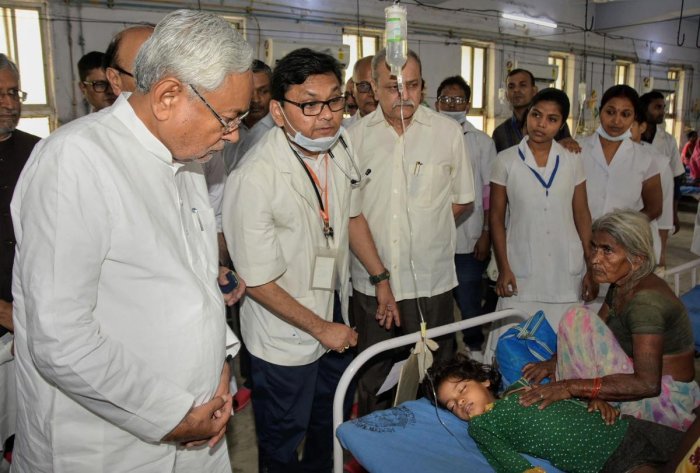
From bahaar to bimaar, how Nitish Kumar let Bihar’s children down

In the 2015 elections, Patna’s roads were adorned with the promise of a Bihar spring with some clever alliteration. “Bihar main bahaar ho, Nitishe Kumar ho,” the Janata Dal (United) prophesied in its poll campaign.
Four years later, the promise of a state in bloom has been replaced by the image of a fertile ground for a mysterious illness that’s killing children in large numbers. Instead of the promised ‘bahaar’ (bloom), it has reclaimed the ‘bimaru’ (ill) tag that once made it part of an unfortunate club of north Indian states.
Over the past few weeks, 112 children have died in Bihar’s Muzaffarpur, the state’s fourth populous city known for its aromatic and succulent lychees. All of them fell to acute encephalitis—swelling in the brain—after complaining of fever and rapid fall in glucose levels in the blood.
In almost any other country with a decent healthcare system, these children could have been easily saved. First, because the illness is not new to Muzaffarpur, it has been around since 1995. In 2012, the illness, called Chamki fever locally, had peaked with 424 deaths. In the next two years, it claimed 222 and 379 lives. Anecdotal evidence and ground reports suggest that in many villages of Muzaffarpur, almost every house has seen the death of a child in the past two decades. Some families have lost more than one child.
A death toll running into hundreds over a period of 23 years should have been enough to alert the state government to the dangers of the disease and come up with a plan to deal with the menace. But, such is the government apathy and the state of healthcare system in Bihar that in spite of these deaths there is still no clarity on the exact cause of the killer ailment and absolutely no plan for dealing with it. After almost three decades since it turned into a mass killer, Bihar’s officials are still debating if the cause is heat, malnutrition or toxins found in locally-grown lychees.
The illness, ironically, could have been easily contained or managed. Health experts argue that almost every patient with symptoms of the illness could be saved with timely intervention and through quick management of glucose levels, whose rapid falls turns fatal. But, Bihar’s primary health care centres do not even have the equipment to check glucose levels.
In terms of health care penetration, Bihar is way behind the national average. A Harvard study had pointed out that Bihar has only “50 per cent of the sub health care centres, 60 per cent of the primary health care centres, and a mere 9 per cent of the community health centres it needs based on the national government’s supply to population norms.”
The other problem with Bihar is that it spends less than half of India’s average on healthcare. Also, more than 90 per cent of Bihar’s population is forced to seek health care in the private sector, much more than the national average of 75 per cent. This combination of expensive health care—a result of non-existent public sector— and poverty has become the bane of Bihar.
Most of the children falling prey to the ongoing illness are from poor, rural families. A majority of them come from Dalit or underprivileged backgrounds. When a child falls ill in these families, they have to either travel long distances for treatment in hospitals with the requisite facilities or wait till they are able to arrange money for private consultation. This delay is killing children whose lives could have been saved.
The government’s apathy for the children of Muzaffarpur is underlined by the callous and insensitive approach to the pandemic. Though children have been dying since the beginning of June, Chief Minister Nitish Kumar found time to visit ground zero only on June 18. During his visit, Kumar, who has been the chief minister for almost 15 years now, announced plans for setting up a super speciality hospital in Muzaffarpur, a promise that would take years. But, he was clueless about how to deal with the crisis now.
Union health minister Harshvardhan, who visited the epicentre of the disease past week, also announced grand plans for setting up a virology institute, a super speciality hospital and a paediatric ICU—exactly the same things he had promised during his visit in 2014 as the country’s health minister.
The truth is, the Bihar government just doesn’t care about the health of its citizens. As part of the national rural health mission, Bihar was to increase expenditure on health care by 10 per cent per annum since 2005. In 2017-18, the expenditure saw a decrease of 16 per cent in spite of robust growth in the state’s GDP.
No wonder, people are now lamenting, Bihar bimaar ho, Nitish Kumar ho!


